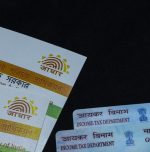Post-office Accounts for Small Savings Schemes

In the Indian context, the legendary Indian Postal system has always played a key role in helping inculcate the habit of financial savings among the Indian public.
The local post office is more approachable (especially among the semi-urban and rural folks) and more customer friendly in terms of higher returns and limited inherent procedures.
The Post Office Saving Schemes include a plethora of products that offer the reliability associated with a government run savings portfolio, and the full-scale treatment that is characteristic of most high-end saving and investment schemes in India.
Here you can find the detail for different saving accounts:
Post-Office Saving Account:
The post-office savings account can be opened minimum of Rs. 50 and maximum of Rs. 1,00,000 by an individual. However, for joint account the upper limit is Rs. 2,00,000/-, but there is no limit for group, institutional or official capacity account.
Withdrawal from the record is by checks and there is no limitation on withdrawals, dissimilar to in a business bank.
Accounts having least adjust of Rs. 200 amid April-September and October-Walk fit the bill for six month to month prize attracts the following January and July.
The premium is tax exempt and is 1/2 for each penny more than that offered on reserve funds financial balance by business banks.
Post Office Recurring Deposit:
The plan covers free life insurance cover after receiving contributions for 24 months since section of Rs. 5, Rs. 10, Rs. 15 or Rs. 20.
In case of death of the investor after a base time of two years, from the date of opening the record, the beneficiary or chosen one will get the full development estimation of the record gave the contributor’s age was somewhere around 8 and 53 years and there have been no withdrawals or defaults amid the initial two years and the record stays current at the season of death.
The advantage of cover is not accessible for a broadened time of store past five years.
Post Office Time Deposit:
A Time Deposit is an investment option that pays annual interest rates compounded quarterly, and is available through post-offices across the country.
They are appropriate for capital gratefulness as in cash develops at a pre-decided rate.
Not at all like certain other speculation alternatives, where returns are equivalent with the dangers, the rate of development is additionally high; Time Stores give back a lower, however more secure, development in venture.
Consequently, Time deposits are one of the better approaches to get a generally high financing cost for reserve funds. The main condition is that they are destined for some period.
The investors can acquire against a time deposit. The adjust in record can be vowed as a security for an advance.
Post Office Monthly Income Scheme:
The post-office monthly income scheme (MIS) provides for monthly payment of interest income to investors.
It is meant for investors who want to invest a lump-sum amount initially and earn interest monthly for their livelihood. The plan is, in this way, a help for retired people.
National Savings Scheme:
In addition to the above post-office deposit scheme, various National Savings Schemes have been introduced from time to time to mobilise public savings for financing the economic development plans.
These plans have been extremely mainstream in perspective of tax reductions delighted in by them. Not at all like business bank conspires, these plans are uniform everywhere throughout the nation.
Not at all like business banks plans, assignment office is accessible for all the National Funds Plans. Accounts can also be transferred from one Post Office to another. Further, many of these savings certificates can be pledged as security, towards loan guarantee.
Kisan Vikas Patras:
Such instruments are accessible at post workplaces and can be acquired in sections of Rs. 1000, 5000 and Rs. 10,000.
The development time frame here is 5/12 years yet untimely: encasement is conceivable. The interest payable on Kisan Vikas Patras is aggravated every year \ but is taxable.
Indira Vikas Patras:
These instruments are accessible at post workplaces and can be acquired by any person. Least interest in Indira Vikas Patras is Rs. 100 and there is no maximum limit.
These are accessible in the development groups of Rs. 200, 500, 1000 and Rs. 5000 the investor has to pay half the face value. The initial amount is doubled in 5 years and these: patras can’t be encased untimely or premature.
The interest on Indira Vikas Patras is compounded annually, is payable on maturity only and is taxable. These instruments are like bearer-bonds and hence should be carefully preserved.
15 Years Public Provident Fund Account:
Under this scheme, deposits can be made in lump sum or in 12 installments, minimum of Rs. 500/- and maximum of Rs. 70,000 in a financial year.
These deposits qualify for income tax rebate under Sec. 88-of I.T. Act. Withdrawal is permissible every year from 7th financial year; loan facility is available from 3rd financial year.
Deposit Scheme for Retiring Govt. Employees 1988:
This scheme permits only one account which can be opened by retired central/state Govt. employee in its own name or jointly with the response.
The account can be opened within three months from the date of receiving the retirements benefits with a minimum of Rs. 1000/- and in multiple thereof can be withdrawn after the expiry of 3 years from the date of deposit.
Just a single withdrawal in products of Rs. 1000/ – can be made in a logbook year. Untimely encasement can be made following one year from the date of deposit however before the expiry of 3 years in which case the enthusiasm on the sum so pulled back will be payable from the date of store up to the date of withdrawal.
The excess interest paid will be balanced at the season of such withdrawal.
Deposit Scheme for Retiring Employees of Public Sector Companies, 1991:
To provide the benefits to the retiring employees of public sector companies, the deposit scheme for retiring govt. employees-1989 was introduced in 1991 for the public-sector companies retiring employees.
Image Reference: https://unsplash.com/photos/lhltMGdohc8










Leave a Reply